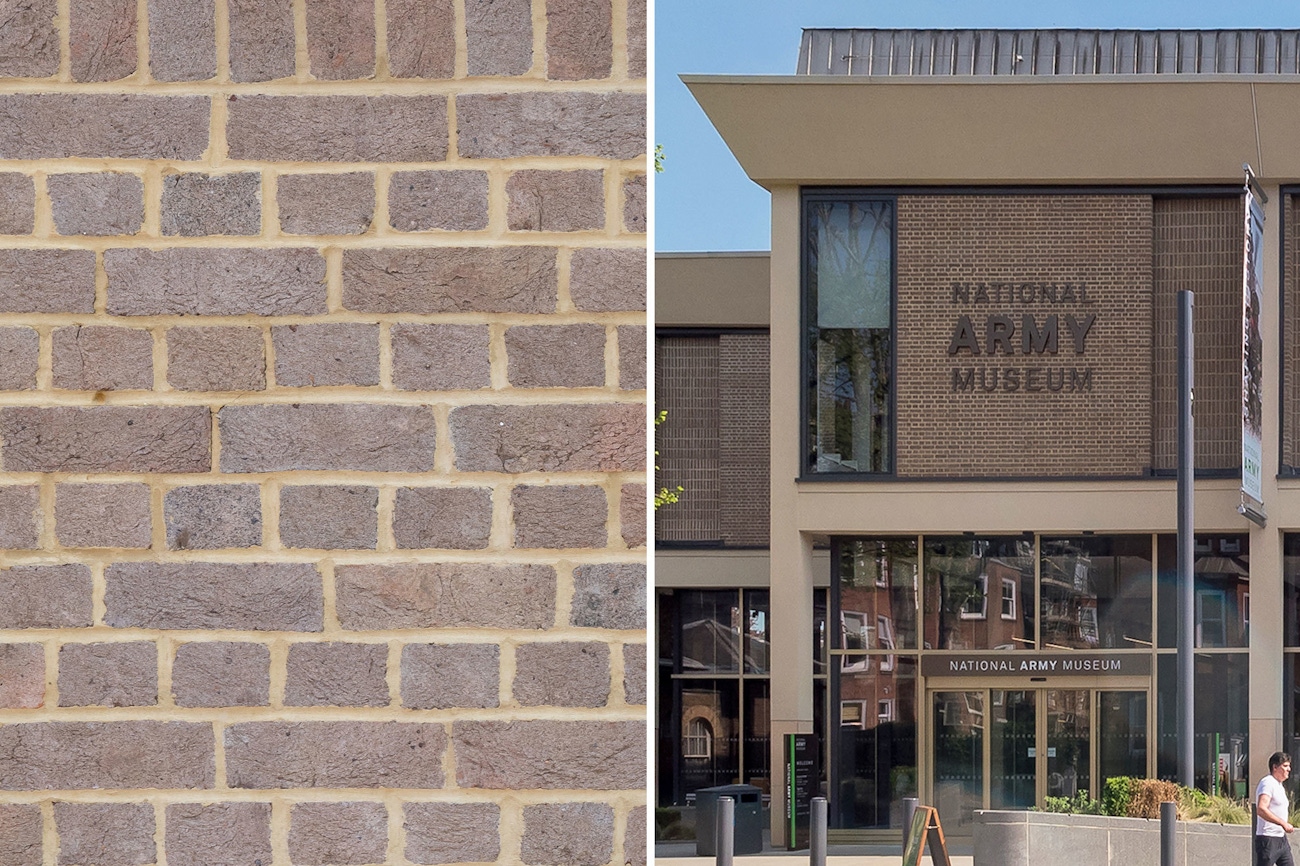Methods of Brick Manufacture
Facing bricks have been the most commonly used facade material in the UK for thousands of years, with greatest use in the housing market.
Alongside design, the greatest impact on the external aesthetics of a building will come down to selecting the right facade material. With thousands of different facing bricks available in the UK and many more available from European manufacturers, there is a type of facing brick for all projects, from traditional to contemporary.
The appearance of a facing brick depends on a number of different factors, including the way in which it is manufactured. Each technique, many of which are fundamentally still the same as those used thousands of years ago, provides the brick with distinct characteristics that can transform the appearance of building.
To speak to one of our brick specialists, click here.
Wirecut
Using an automated manufacturing process, wirecut bricks are produced by extruding a column of clay through a die and then cut into individual bricks using wires. As a result, wirecut bricks tend to be very uniform in shape with precise edges and extremely good tolerance.
Wirecut bricks (also known as extruded bricks) usually have perforations running through the brick which are designed to reduce the weight of the brick and aid the drying and firing process. Different textures can be applied to wirecut bricks during the manufacturing process such as sanded textures, rolled textures, dragwire textures, creased textures, rustication and glazes.

Glazed Wirecut
Following the extrusion of the clay through the die, the bricks are cut with a wire and dried for at least 2 days. The dried clay is then fired in a kiln to produce a smooth, precise, modular brick onto which a coloured glaze can be sprayed, before going through the kiln a second time. The resulting product is a striking even glazed brick, available in almost any RAL colours and even special shapes.

Handmade
Despite the advances in technology that have resulted in the ability to mass produce bricks using large scale machines, there is still a great demand for handmade bricks. Using the same process that has been in practice for centuries, individual bricks are hand thrown into moulds. The result yields an attractive, gently creased texture in the face of the bricks. Handmade bricks usually have an indent in the top of the brick known as a ‘frog’.

Stock
Stock bricks (also known as soft mud) are produced using clay with a relatively high water content, taken from rivers or quarries, and using an automated process the clay is placed into moulds by a machine. A fine sand is used to prevent the clay from sticking to the molds and the external face texture of a stock brick will depend on the clay type used in the manufacturing process. Stock bricks often have more varied edges and like handmade bricks they also usually have a frog.

Waterstruck
Waterstruck bricks are produced by pushing clay through rectangular dies using water as a lubricant to form the bricks. As a result waterstruck bricks have a unique, slightly irregular appearance and tend to be solid, without a frog or perforations.

Long format
Long format facing bricks are an ideal way to make a design statement. The longer, thinner brick shapes contribute to a contemporary aesthetic that is growing rapidly in popularity. Long format bricks are manufactured using the same methods previously described and are available as extruded wirecut bricks for precise straight edges, stock bricks or waterstruck for a brick full of character. These long, slender bricks offer modern interest to elevations and are available in a wide variety of colour options including glazes.

With thousands of different brick colours, sizes and textures found across the UK, matching existing brickwork can be challenging.
Our experienced sales teams across the UK draw upon their years of local knowledge to offer a highly personalised service that assists architects, developers and contractors with selecting the most suitable brick type for building projects through our online brick matching service.
CPD seminars are also a great way to learn more about facing bricks. From 'back to basics' refresher sessions, to brand new product innovations and technical considerations when designing in brick, these seminars are an excellent way of finding out more about our product portfolio, seeing the products up close and how they will benefit your projects. Our teams are available nationwide to deliver a range of free CPD seminars in your offices, or one of our showrooms, at a time and date that fits your schedule.
For more information about the different types of bricks we can supply, please visit our brick product pages here. To speak to one of our local specialists, please contact us.
